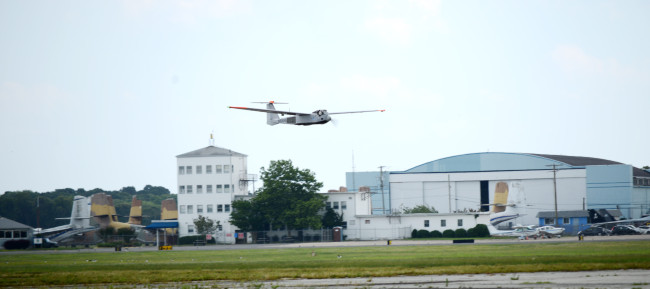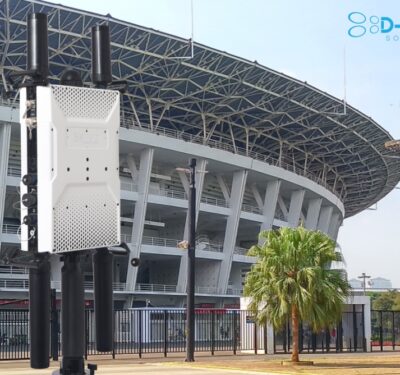
The RS-20 UAS landing at the Cape May County Airport in New Jersey during recent flights to test new technology designed to avoid collisions with other aircraft — a key step toward the integration of unmanned aircraft into the national airspace.
Photo courtesy of American Aerospace Technologies Inc.
Researchers associated with the Mid-Atlantic Aviation Partnership of Virginia Tech and Rutgers University recently tested UAS avoidance technology at Cape May County Airport in New Jersey.
The team flew the fixed-wing RS-20 UAS within sight of ground observers. The flight represents the partnerships’ first in New Jersey, according to a news release.
The RS-20 features a wingspan of more than 17 feet, according to the release. A pilot on the ground in the central command center maintained communication with the RS-20 at all times.
“The development of sense-and-avoidance technology is a critical path toward the safe introduction of unmanned aircraft systems into the nation’s airspace,” said David Yoel, chief executive officer of American Aerospace Technologies Inc., a Pennsylvania-based company that provided and piloted the test vehicle, according to the release. “The aircraft was equipped with sensing equipment that allowed it to monitor its position in the airspace.”
The aircraft was also recently used to analyze pipeline conditions, according to the release. During the research last month, the RS-20 used its sensing and imaging equipment to capture high-precision images from various altitudes to asses piping damage. The researchers outfitted the pipelines with “distinct levels of deterioration and cracking,” according to the release.
“There are an enormous number of possible uses for UAS and Rutgers engineers are developing the equipment and technology to impact civil and commercial usage,” said Thomas N. Farris, dean of the School of Engineering at Rutgers University, according to the release. “Infrastructure maintenance and inspection, public health, disaster preparedness, agriculture, and more all hold potential opportunities for UAS development and innovation.”






